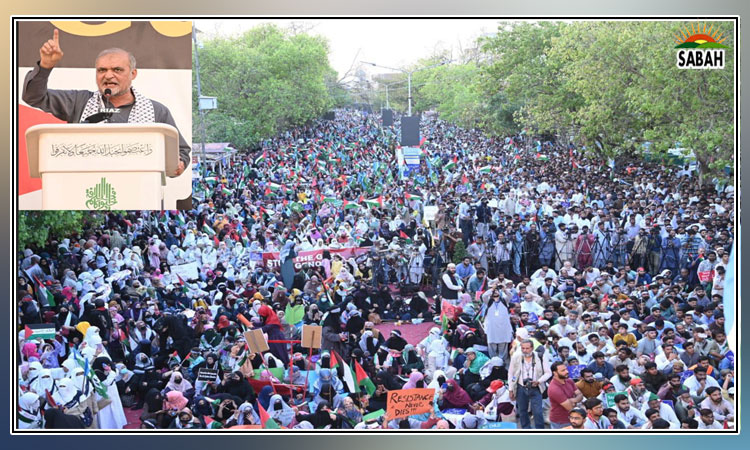Pakistan’s regional policy… By Javid Husain
It is axiomatic that Pakistan’s regional policy should be anchored to ground realities instead of being based on wishful thinking and pious hopes. Historical record, however, reveals that in many cases our regional policy fell short of this ideal and in the process severely compromised our national security and economic interests.
Pakistan’s Kashmir and Afghanistan policies of the 1990s are prime examples of the mismanagement of our regional affairs leading to serious harmful consequences which continue to haunt the country. Even our current regional policy suffers from serious shortcomings and is riddled with contradictions. The need of the hour is to analyze closely the emerging regional and global security environment with a view to recommending a regional policy in the best interest of Pakistan.
The defining features of the evolving regional security environment are the growing sway of Hindutva or Hindu nationalism in India, the rapid rise in India’s economic and military power, and its hegemonic designs in South Asia and the Indian Ocean regions. The huge rightward shift in Indian politics since Narendra Modi-led BJP’s landslide victory in the general elections in 2014 poses a serious threat to Pakistan’s security.
The Hindutva-driven policies of the Indian government appear to be deeply influenced by Kautilya’s ‘Arthashastra’ which in the words of Henry Kissinger “sets out, with dispassionate clarity, a vision of how to establish and guard a state while neutralizing, subverting, and (when opportune conditions have been established) conquering its neighbors” (World Order, p195).
The threat to Pakistan posed by a Hindutva-driven India is exacerbated by its hegemonic designs in South Asia and the Indian Ocean regions. India’s hegemonic strategic goals have been well encapsulated by noted Indian security analyst C Raja Mohan: “India’s grand strategy divides the world into three concentric circles. In the first, which encompasses the immediate neighborhood, India has sought primacy and a veto over the actions of outside powers.
“In the second, which encompasses the so-called extended neighborhood stretching across Asia and the Indian Ocean littoral, India has sought to balance the influence of other powers and prevent them from undercutting its interests. In the third, which includes the entire global stage, India has tried to take its place as one of the great powers, a key player in international peace and security.” (‘India and the Balance of Power’, Foreign Affairs, July-August,2006). Raja Mohan then goes on to describe Pakistan as an obstacle in the realization of India’s strategic ambitions.
The rapid rise in India’s economic and military power over the past three decades has provided it with the resources to pursue its strategic ambitions in the South Asia and Indian Ocean regions. According to the latest estimates, India’s GDP and military expenditure are $3736 billion and $81.4 billion respectively as against the corresponding figures of $376 billion and $11 billion for Pakistan.
These developments at the regional level need to be seen in the context of the growing US-China rivalry which extends to almost all aspects of national activity covering political, security, economic, commercial, technical, and cultural fields. China’s GDP in PPP terms is projected to be $33,014 billion in 2023 as against $26,854 billion for America. China is also rapidly building up its military power and world-wide political, economic, commercial, technical and transportation links. The US sees in a rapidly rising China a potent challenge to its global hegemony, especially in the Indo-Pacific region.
The US has responded to the challenge posed by China’s rise by developing a string of alliances or strategic partnerships around China to contain it. India is the central figure in the American policy of containment of China in the Indo-Pacific region. Indo-US cooperation in strategic, security, economic, technical, and scientific fields has unsurprisingly witnessed tremendous growth over the past two decades, especially since March 2005 when the US formally declared its intention “to help India become a major world power in the 21st century”. India’s chairmanship of the G20 summit to be held in India in September this year reflects its increasing international clout.
Other major participants of the US policy of containment of China in the Indo-Pacific region are Japan, South Korea, the Philippines, and Australia. Washington has also employed world-wide economic, commercial, technical, and cultural instruments of policy to pressurize China and slow down its economic growth besides overt and covert means to undermine China’s internal political stability.
America’s policy of containment of China is not a short-term phenomenon. It is a long-term development which will be the defining feature of the international security environment for the remainder of the 21st century with far-reaching strategic implications for the rest of the world. It also provides conclusive evidence that when it comes to a crunch, geopolitics always trumps geoeconomics.
The rapidly growing US-India strategic cooperation to contain China will be the most important factor in determining the nature and direction of the US policies towards South Asia. It will obviously upset the strategic balance in South Asia in favour of India if Pakistan does not take necessary countervailing measures. An important plank of the US policy towards South Asia would be to help India establish its hegemony in the region so that the whole region including Pakistan acts as a barrier to the expansion of China’s power and influence in South Asia and the Indian Ocean regions.
India’s growing power and international stature in conjunction with its hegemonic ambitions in the region and outstanding Pakistan-India disputes, especially on Occupied Kashmir, should be a source of serious concern to Pakistan which historically has faced and continues to face an enduring threat to its security emanating from New Delhi. Unfortunately, Pakistan’s regional policy lacks clarity of purpose in facing the long-term Indian threat to its security and is riddled with contradictions.
Our policymakers need to remind themselves constantly that in international politics power respects power only. International law and morality play a limited role in strategic issues of peace and security. Free trade with India, on which the concept of the South Asian Economic Union is based, will merely enable it to dominate Pakistan economically, destabilize it politically, and realize its hegemonic ambitions in South Asia at the expense of our security, sovereignty, and economic development.
Trade with India, whenever it is resumed, must therefore be accompanied by well-considered measures to ensure the development of Pakistan’s industry and agriculture, and safeguard its economic progress and prosperity. Saarc, which lacks the preconditions for the success of a regional cooperation organization, is dead for all practical purposes. We would be well advised instead to focus on the ECO for promoting regional cooperation.
China has been Pakistan’s all-weather friend for the past six decades. The enduring security threat posed by India underlines the imperative for Pakistan to develop its vital strategic, security, economic, and technological cooperation with China while strengthening friendly relations with Iran, Afghanistan, Turkey, the Gulf countries, and Central Asian Republics. But, above all, Pakistan must stabilize itself politically and accelerate its economic and technological progress while pursuing a low-risk and non-adventurist foreign policy at the regional level.












